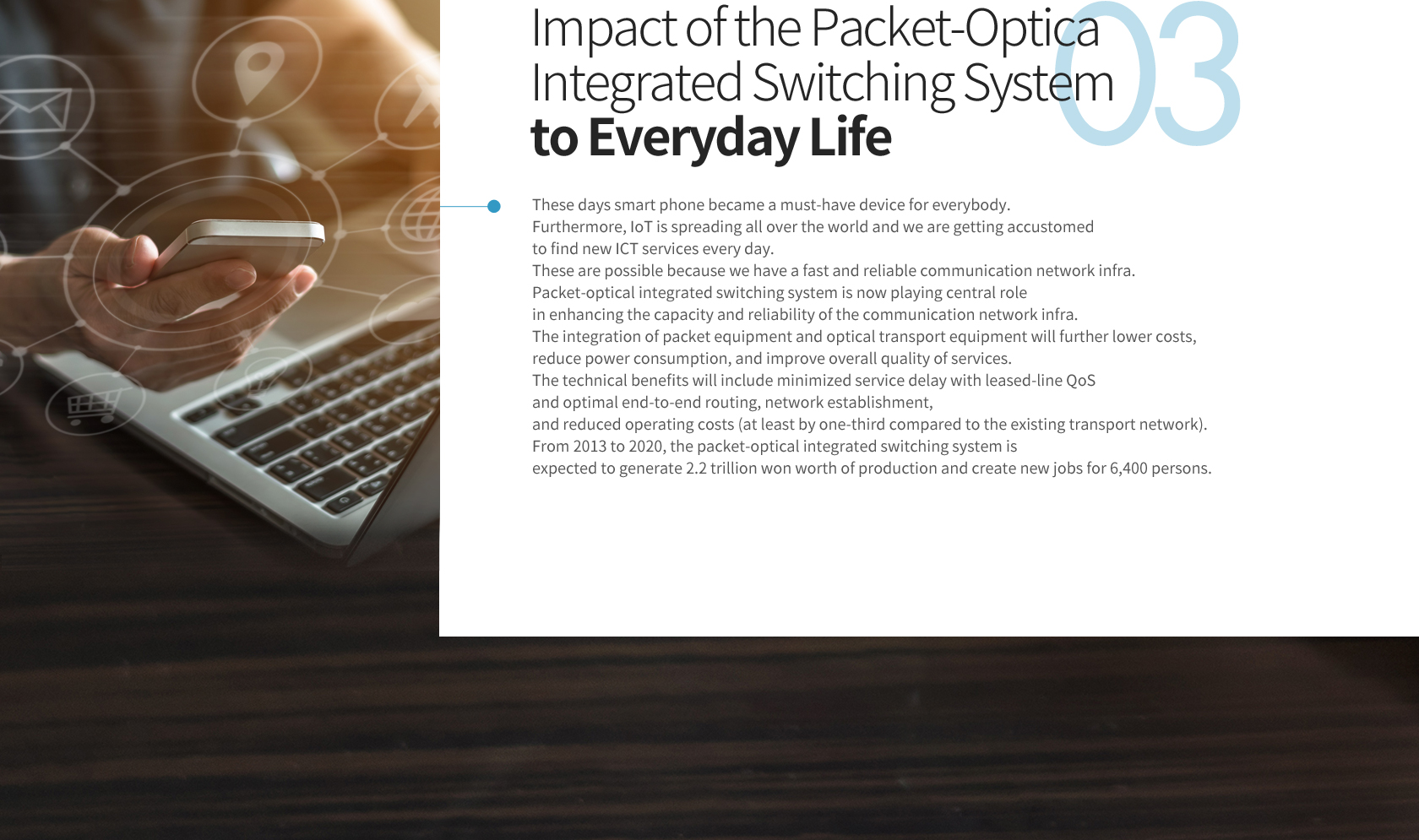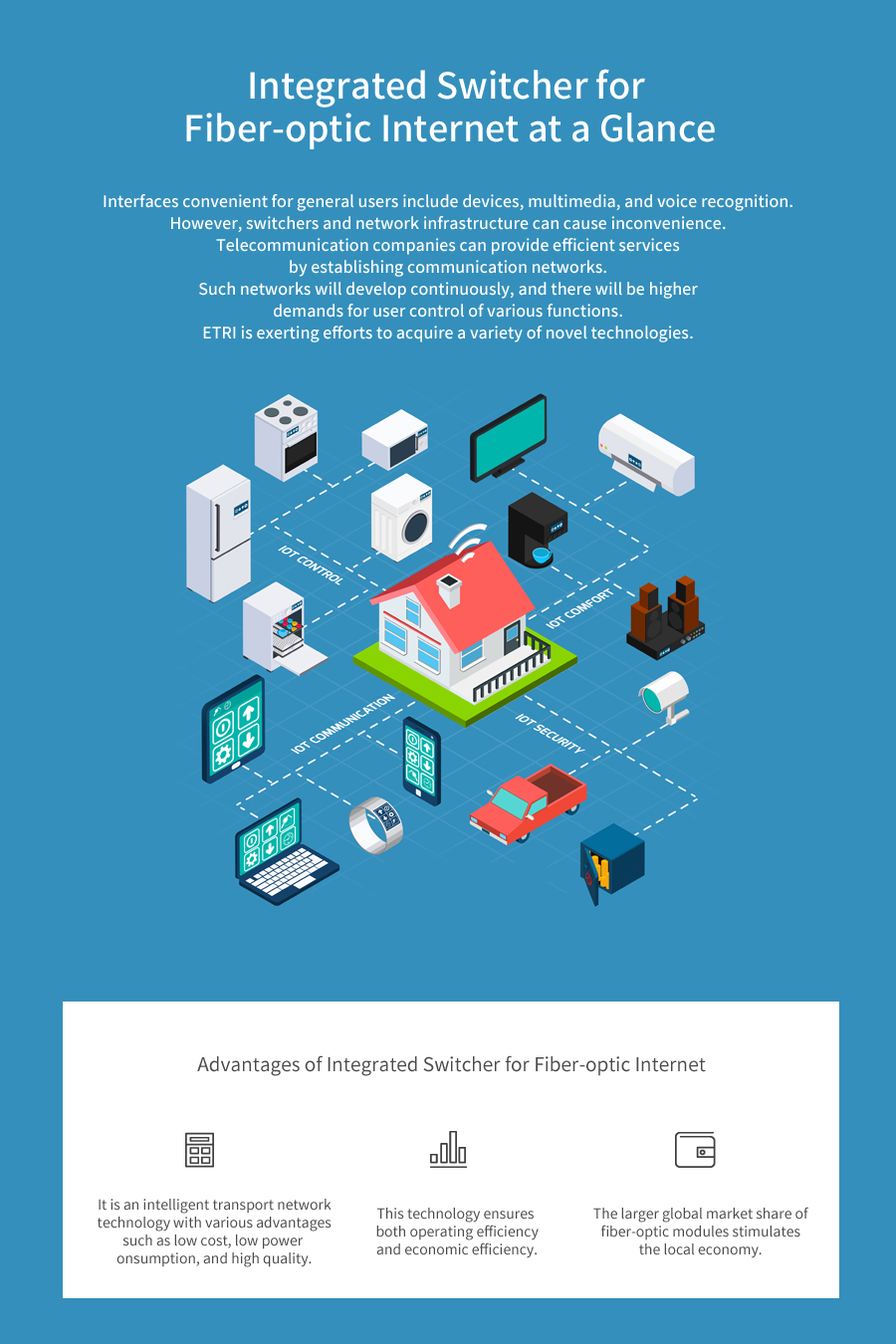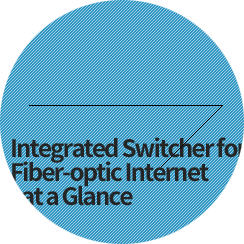






Packet-Optical Integrated Switching System
Breathing New Life
into Communications
with Efficient Technology
The packet-optical integrated switching system integrates the packet transport layer and the optical transport layer. It has the capability of providing optimal end-to-end transport path with appropriate bandwidth upon customer’s request in real time. It is an intelligent transport network technology with advantages of low cost and low power consumption, enabling various new services of high quality.

01
Reliable Technology,Born Amid Challenges
Until recently, network service providers are building their network using the mixture of optical switching network, circuit switching network, and packet switching network. Since different network elements are needed for each switching network, it is very costly and footprint consuming, not to mention the complexity in providing a transport path through them by manipulating different control planes. The packet-optical integrated switching system was born to address the aforementioned issues and to improve the efficiency of overall network management by integrating all the functions, i.e., optical switching, circuit switching and packet switching, in one network element.
When the project plan was announced, there were concerns from the incumbent members of the current network management, arguing the vision of the project was too revolutionary. Research began only after persuading opposing parties that higher efficiency would generate higher profits. Another challenge was to gather sufficient human resources. ETRI solved the problem by collaborating with the companies which will eventually manufacture the system. It added the advantage of shortening the technology transfer period when the project was successfully ended.

02
From Domestic
Market to the World Market
Korean government may designate specific products as “small and medium-sized company products”. Then only domestic small and medium-sized companies can enter the related domestic market. Multi-Service Provisional Platform (MSPP) is an example. Since newly developed packet-optical integrated switching system will replace MSPP, many global vendors wanted to enter the newly opened domestic market. However, armed with knowledge and experience including many years participation in ITU-T SG15, ETRI, in cooperation with the Small and Medium Business Administration, Korea Association of Network Industries (KANI), and Korea Communications Industry Cooperative (K-BIZ), played a key role in newly designating packet transport network (PTN) equipment as “small and medium-sized company products” in 2015. Packet-optical integrated switching system belongs to PTN equipment category. In June 2015, a PTN equipment produced by a domestic company was installed in the transport network of Busan Metro Line 1.
In the development of packet-optical integrated switching system, ETRI accumulated technologies in high-speed compact optical transceivers and proliferated them to domestic transceiver manufacturers, including ARTech. ARTech opened Chinese high-end optical transceiver market and recorded 47.5 billion won in exports from 2014 to 2016. During the time, ETRI not only provided technical support to improve product quality, but also actively participated in marketing activities.
03
Impact of the Packet-Optical Integrated Switching System
to Everyday Life
These days smart phone became a must-have device for everybody. Furthermore, IoT is spreading all over the world and we are getting accustomed to find new ICT services every day. These are possible because we have a fast and reliable communication network infra. Packet-optical integrated switching system is now playing central role in enhancing the capacity and reliability of the communication network infra. The integration of packet equipment and optical transport equipment will further lower costs, reduce power consumption, and improve overall quality of services. The technical benefits will include minimized service delay with leased-line QoS and optimal end-to-end routing, network establishment, and reduced operating costs (at least by one-third compared to the existing transport network). From 2013 to 2020, the packet-optical integrated switching system is expected to generate 2.2 trillion won worth of production and create new jobs for 6,400 persons.



